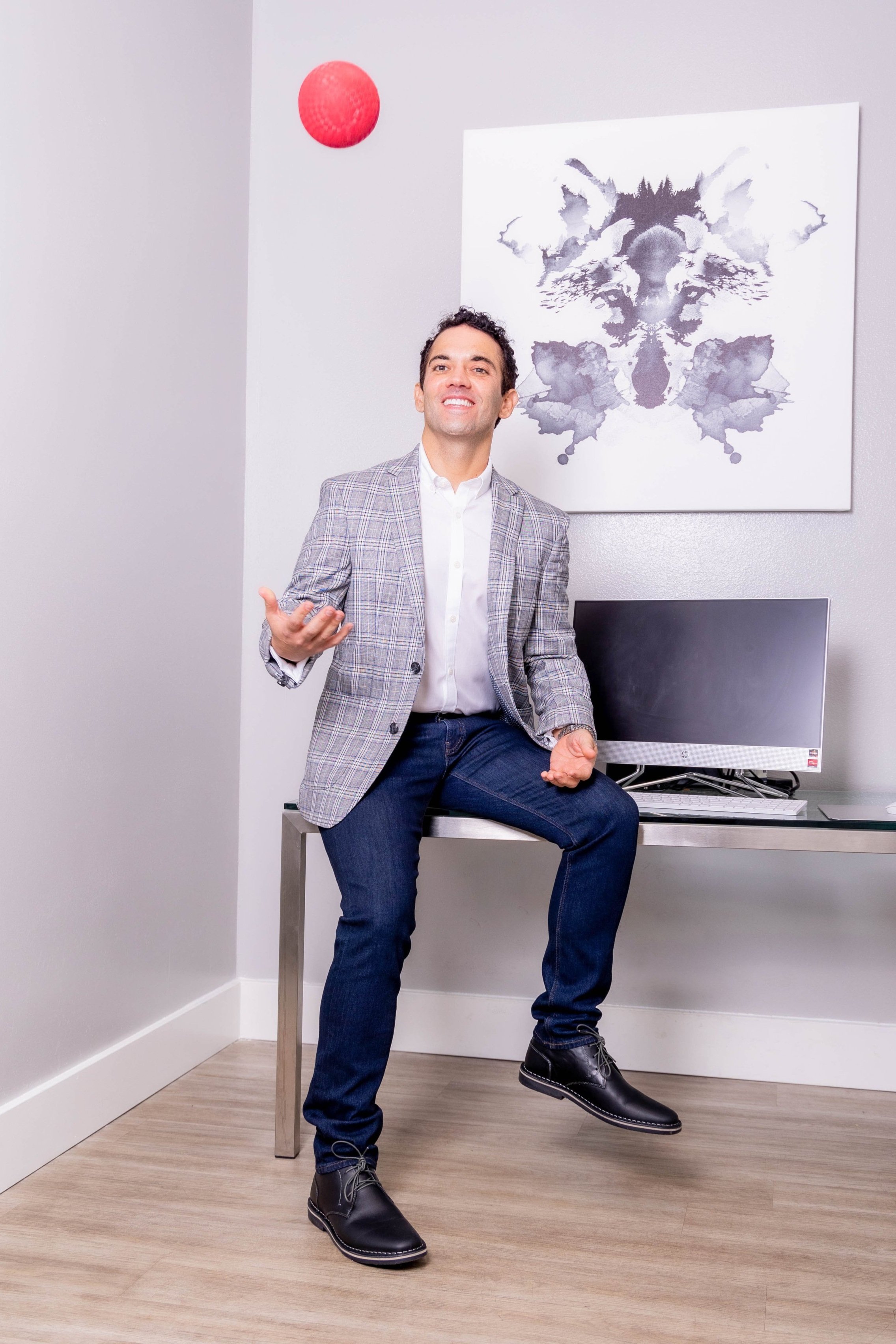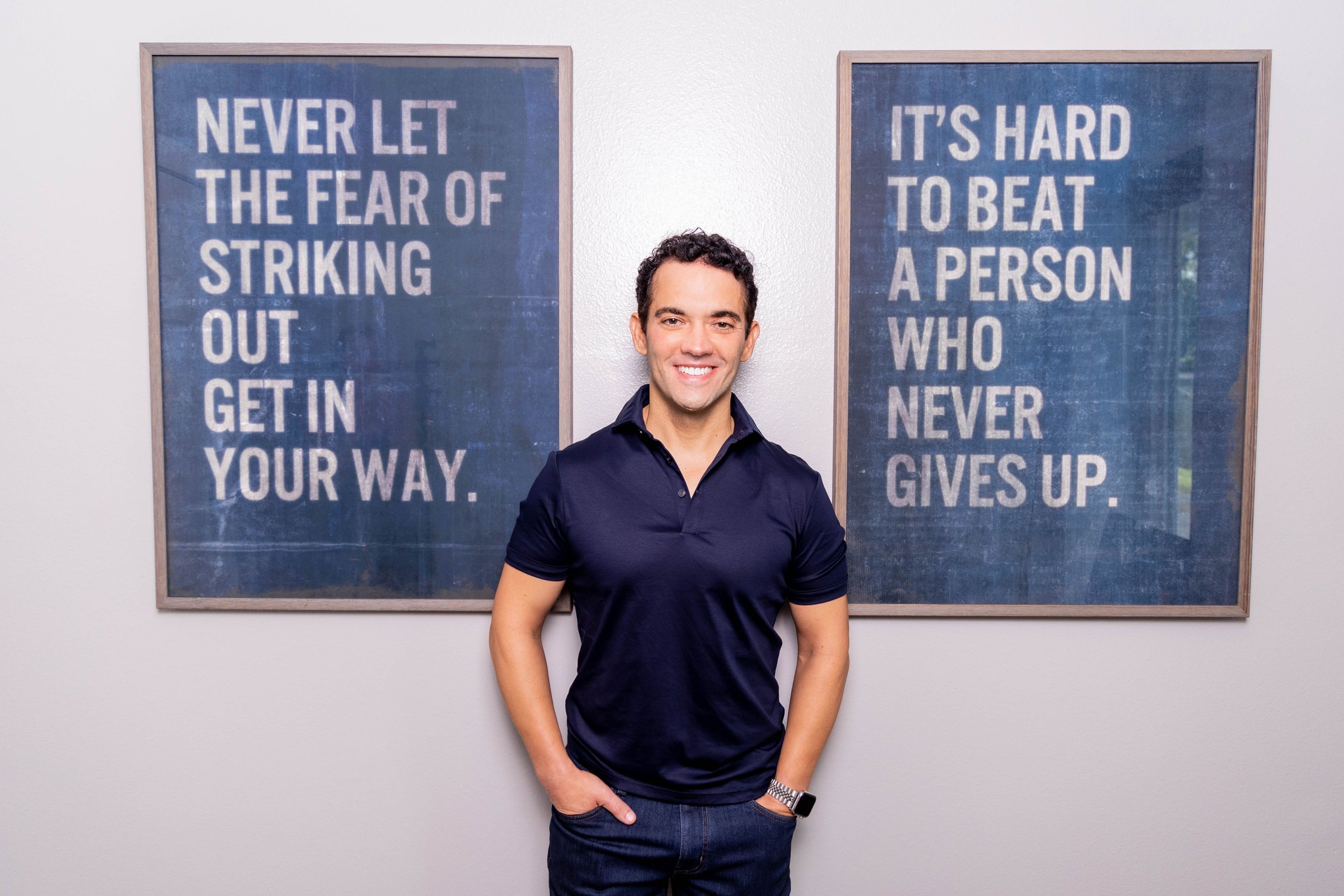GAINING CLARITY
Perhaps we can all agree that we’re living in challenging times. From political strife to the mental health crisis and endless worries ranging from climate change to inflation, to say that many of us are on edge, feeling divided and just trying to keep up, is probably accurate. For many, friendships and family ties have been lost and broken due to the heat of these moments. As we navigate through the negativity, it seems logical to peel back this onion and ask, what happened to empathy? Jack C. Carney, PhD, of Clarity Health LLC, sheds some light on this multifaceted subject to provide a path to stop the insanity, or at least give us some points to ponder to help us endure the emotional upheaval we’re facing.
By Hayley Hill Photos Stevye Photography, StevyePhotography.com
With the seemingly impossible demands of the day-to-day, many of us are short on time and patience. As we rush about stressed to the limit, it’s easy to make snap judgements and stress dump on whoever is nearby. From there, we fall into an exhausted heap only to rise and repeat the next day. Somehow this has become the new normal for far too many people. What seems obvious is that we just don’t seem to care about others and their experiences, but what we’re missing is that this is robbing us of our joy and humanity.
Knowing we can’t turn back to simpler times and that world peace is probably far off, what can we control? More than likely, it’s just our own thoughts and behaviors. And, in the name of relief, exploring this topic might help us feel better and manage our responses, influence our relationships, and even impact our community.
For Jack, a licensed psychologist, empathy and compassion are key, and something we can control, in handling the daily emotional yo-yo of living in today’s world. “In its simplest terms, empathy is when you’re able to walk a mile in another person's shoes and share their emotional experience for a moment.”
Sounds easy, right? Starting with ourselves, we can ask questions like: When was the last time I considered what a person might be going through as they drove me nuts, offended me or disappointed me? Did I tap my foot and tune them out until I could cut them off and launch into this is why you’re wrong, bad or delusional? Or, did I ignore them completely? With no time to listen, consider what you might have missed? Too busy to care? Fed up with understanding? This is where the problem lies apparently.
From a psychological standpoint, Jack shares a few theories about attributions. “Attributions are how we explain another person’s behavior. These are consistently linked to the quality of our relationships. Attributions can be about who or what caused an event, and accountability for the event. Individuals who attribute negative explanations to a person or event tend to minimize the positive aspects and struggle more so in relationships and day-to-day functioning in general. For example, if attributing responsibility for a negative partner behavior like forgetting the milk is seen as intentional and selfish, this can create distance between the individuals. Forgetting the milk could have been because their baby was inconsolable and they had to rush out of the store and had nothing to do with being selfish.”
A misunderstanding here and there obviously isn’t the problem. But, when they become assumptions and our go-to responses, that spells trouble. “The use of negative attributions occur much more often in troubled families and they tend to spill over into work, school, and other relationships. There’s a snowball effect even in how children come to view and interpret their environment. Watching how we view the world around us, children can incorporate these negative attribution tendencies. Tragically, the cycle continues for generations. It’s not just DNA. Social learning residue carries on for better or worse,” Jack outlines.
Expanding on this, Jack adds, “We can think of examples like cursing at someone who flies by us on the road, snapping at a partner who needs a nap when we we’d rather they mow the grass, or even shutting down when someone says something we don’t agree with. Rather than empathizing with those who frustrate us, we instantly go to a negative place. It leaves out the flexibility to consider how we also sometimes speed when late, choose a nap over a chore, and wish someone would give us the time to explain something rather than cut us off.”
There’s also something Jack refers to as dichotomous thinking—“all good” versus “all bad”. Much like flight or fight thinking, who can’t relate to this? Jack says, “When we think in extremes, our emotions are likely to follow. This helps to reduce cognitive energy and improve quick decision making. If you see a train coming at you, it’s important to think, “Get out of the way!” If you were to sit and weigh the pros and cons of the train coming at you, then a positive outcome may not occur. There’s a benefit to this black and white thinking, but it may also worsen the attributions and outcomes in relationships. For example, if you tend to assume your coworkers are lazy, you’ll miss out on capitalizing on their strengths. The same goes for family relationships. If you assume an elder is just a grump, you’ll miss out what they can offer.”
And, how about that negative inner-voice? “Finding a balanced approach to developing a counter critic to those negative voices we hear in our minds is essential. For example, drowning out echoes of a hypercritical mother’s voice in the passenger seat can be exhausting and paralyzing. We use words every day to do great things and collaborate, but when we judge our thoughts it only adds to the daily struggle and derails productivity. The surface calm is only temporary and just like a fishing bobber, these thoughts bounce back up to disrupt and create ripples. It ends in wasted energy. Some people end up checking out or distracting themselves, and ignoring the problem. These add a strain to making decisions, resolving problems, and getting things accomplished,” Jack explains.
Offering a solution, Jack shares, “There’s another option; watch, observe, listen, and allow the discomfort to come and go. Books by Stephen Hayes and Thich Nhat Hanh are notable for conceptualizing the development of this observing self. Taking an observer approach to our thoughts diffuses anxiety into a thoughtful back and forth, and allows thoughts to naturally settle on more of a middle ground, a healthier shade of grey. Introducing a ‘counter-critic' from the backseat serves to round out this dialogue. It has the added benefit of adding in much needed humor and improving decision making.”
Wondering how we’ve become such black and white thinkers, Jack shares some insight. “Black and white thinking can rob us of the many joys relationships can provide. Life happens in the grey areas. I joke that developing a fifty-plus shades of grey approach to how we perceive others and their actions allows us to extend others the same considerations we all want.”
Jack is similar to many of his peers in that he attributes a lack of compassion and empathy to the behaviors exacerbated by our screen time. “Cell phones and social media can magnify “all good” versus “all bad” thinking by frequently distracting and reinforcing ‘snap’ decision making. Think Facebook, Instagram, TikTok, and Snapchat thumbs up, likes, hearts and more. Making snap judgments have rolled off our devices and into our real relationships and life encounters and become an accepted norm. Due to the pace we scroll through this content, it’s hard to see yourself walking in another person’s shoes, especially since you’re distracted by the next tweet or TikTok. This can cause us to fall back on assigning negative attributions to others and into “all good” versus “all bad” thinking, as it is quicker, easier, and requires less time than a TikTok.”
Jack makes good points and adds that there’s a cost to us as well. “Self-reflection is challenging to generate when you’re mindlessly scrolling. Distraction derails the cognitive flow for thoughtful consideration, which may escalate additional quick attributions and all or nothing thinking. The distractions of electronics only erode opportunities for quiet moments to connect, seeing the other variables, and appreciating the grey areas. Without this range of feeling and emotions, relationships can become gridlocked in ‘high’ highs and 'low’ lows – even anger and depression. Consider how your thoughts may be different if they were in a range of fifty-plus shades of grey. Would they soften the roller coaster of emotions to evening waves lapping on the beach?”
Living in the real world, Jack isn’t about tossing your electronics and skipping the scroll. “I’ve recently learned about streaks on Snapchat. So, to bring balance to your day-to-day snaps, don’t just snap. Consider a thoughtful picture or take a moment to savor someone who was thinking of you. When taking a picture, take a moment, a breath, and then deliberately apply a positive attribution to this special person and shared moment. Slow down, enjoy the streak process, be grateful, and make this moment deliberate and meaningful.”
Interestingly, Jack brings up another aspect. “At Clarity Health, we provide many services like individual psychological evaluations, drug testing for the work place, and more. These services often scare people when they are meant to help people. For example, wouldn’t it be more helpful to know a child is on the spectrum, not defiant? Or, couldn’t a business better serve its employees by knowing if they struggle with addiction issues? Reframing our mindset allows us to realize these services are nothing to fear and to move forward in living our best lives,” Jack shares.
It sounds like giving compassion is the way to get compassion, and that we all need to find ways to slow down our minds. And, it sure sounds good to us. Taking time to understand another not only benefits us, but all those around us. “It comes down to mindfulness. This term often makes people feel like they have to do goat yoga daily, survive on granola, and live in a forest,” Jack jokes, adding, “The best way to become mindful is to practice it here and there. Try it at a stop light when you look at someone in the car next to you or in line at the store when the person in front of you is fumbling around looking for their credit card. And, yes, practice it with that elder who starts every sentence with ‘In my day’. Rather than roll your eyes, consider a time when you couldn’t find your credit card. Consider external circumstances before quickly assigning a label of judgment. Perhaps this will make it easier to use a kinder tone, rather than one of frustration. Once we begin to ask questions, listen, and engage more often, we may find our relationships more fulfilling and we’ll reap the sweet rewards of having a more open heart and a lot less stress. We can be the change we want to see.”
Clarity Health | 2054 Dauphin Street, Mobile | 251.635.4541 | ClarityHealthllc.com












